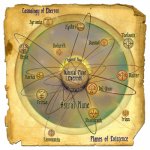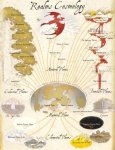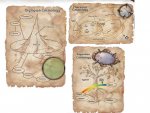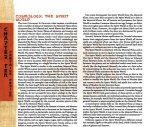Neonchameleon
Legend
Not at all. Eladrins in 4e clearly are intended to fill the same story niche as pre-4e eladrins. They even use the same titles (Ghaele, Bralani etc).
Only sort of. Eladrins in 4e have multiple niches (like any PC race). They can use the pre-4e Eladrin niche, but I find them much better in a more either traditional or urban fantasy cosmology than I do with the Great Wheel. Eladrin as the Fae or the Sidhe works perfectly. (For all James Wyatt claimed 4e wasn't about tripping through fairy rings he made a good cosmology for it with the Feywild and the Shadowfell).
I'm not touching on that at all. No where have I suggested that D&D is a generic fantasy game.
Just as well because it isn't
What happens if WotC decides they want to use both pre-4e and 4e archons in 5e?
What happens if they decide they want to use both pre-Blood War daemons and post-Blood War daemons?
And that may be a reasonable argument. But the changes from 1e to 2e continued and evolved over a period of a decade before they were incorporated into 3e. Yes, 4e might not be a major alteration of 1e (I actually think it's a bigger alteration than you're crediting) but it was a huge change to the lore that had existed throughout 2e and 3e, which were themselves built upon a foundation laid out by 1e. So it's kind of disingenuous to say that the change between 3e and 4e is equivalent to the change between 1e and 2e... because it's not.
Indeed. It is kind of disingenuous to say that the change between 3e and 4e is equivalent to that between 1e and 2e. There were no entire classes removed from the game by removing their deity so they could not come back. There was no abolishing daemons and devils for yugoloths. 2e took the mythological infernal creatures out of core and they only crept back.
Elves and eladrin are listed as separate races, and that's what most people pay attention to. That and the fact that the name was used by an angelic race prior. And while elves explicitly hang out in the Prime, eladrin primarily come from the Feywild and come with a lot of extra fluff that doesn't bear all that much resemblance to what existed for high elves prior.
That's because the elf archetype was overloaded to the point of obnoxiousness. How many subtypes did elves have?
When the change was originally made I thought it might be interesting. Separating drow, high elves, and wood elves does make a certain amount of sense. But really, it mostly ended up causing (at least within the FR fandom) a lot of grief and arguments for very little reason.
In play it takes about 30 seconds to sort out. I have no argument with the idea that The Spellplague was a bad thing. I prefer the post-Spellplague Realms. But I prefer Eberron, Sigil, Athas, and the Nentir Vale to the post-Spellplague Realms. Meanwhile you get the Realms you like nuked. It was a bad decision all round.




